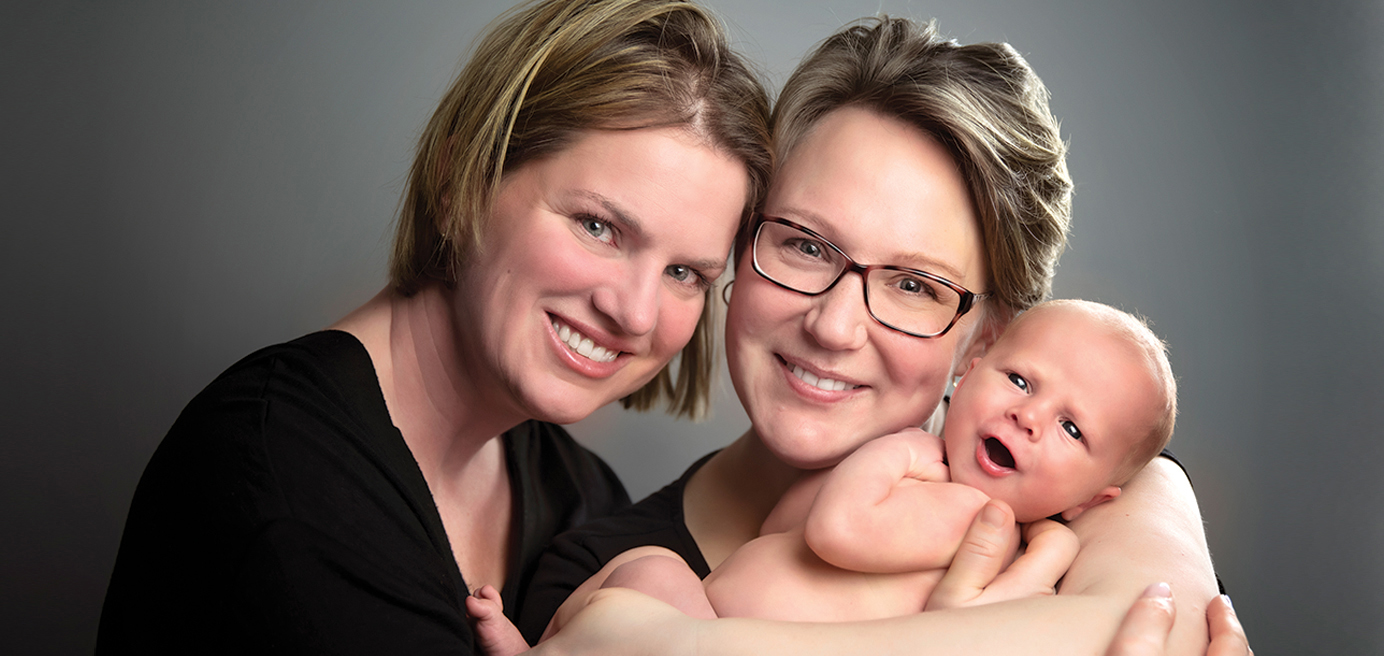 Mothers' Milk
Mothers' Milk

CO-LACTATION CONNECTION Prince Rupert nurse Andrea Wilmot (right) and her partner and local MLA Jennifer Rice (left) share breastfeeding duties while raising their son Lua.
Andrea Wilmot and her Partner Share the Joy of Breast-feeding
When Pince Rupert’s Andrea Wilmot and Jennifer Rice decided to have children, they began the process with a conversation had by many same-sex couples. Which of the women would be the gestational mother?
“We made the decision that I would be the one to carry the baby,” says Wilmot, who works as a community health team lead for Northern Health. She and Rice, who currently serves as the MLA for the North Coast electoral district, were delighted when Wilmot conceived, and both looked forward to the adventure of parenthood.
But Wilmot noticed a change in Rice as the pregnancy progressed. “Jennifer started to feel a sense of fear about not being able to bond on the same level as I would, as the gestational mom,” she says.
Then, a few months before Wilmot was due, Rice came to her with an unexpected request. “Jennifer told me that she also wanted to breastfeed.” Wilmot recalls being solely focused on her pregnancy at the time and admits the reality of what Rice was proposing didn’t sink in at first. “I didn’t fully understand what it would entail or if it was even possible.”
"He was just moments old and he latched onto Jennifer right away."
Co-lactation is indeed possible for same-sex couples, adoptive parents, surrogate moms, trans couples and polyamorous parents. The process gives individuals the option to nurture and bond with their child through breastfeeding – something not otherwise available to them.
Inducing lactation in a non-gestational parent is triggered by taking progesterone, estrogen and prolactin – the same hormones a pregnant mother’s body produces to prepare for lactation. Once the baby is born, the mother’s prolactin levels rise, while her estrogen and progesterone decrease, which then triggers milk production.
But Wilmot says practical considerations about Rice’s desire to induce gave her pause. “I think my initial hesitation was partially due to her being a sitting MLA who has to split her time between Prince Rupert and Victoria.”
After consulting her doctor, Rice started a protocol that included taking birth control pills in the months leading up to the due date, followed by breast pumping around the clock. Luckily, she started lactating within two weeks.
Wilmot delivered baby Lua on Dec. 7, 2019 and after letting him spend a few minutes with her, nurses passed Lua to Rice for the two to bond. “He was just moments old and he latched onto Jennifer right away,” says Wilmot.
A mother’s milk supply typically yields a higher volume at night when there is more prolactin production and so Rice began to lie with Lua and allow him to nurse on demand throughout the night, which in turn increased her supply.
According to Wilmot, the only downside was the fact that Rice didn't start taking hormones until a few months before Lua was born, which has affected Rice’s milk production. But Lua is able to successfully feed from both parents, and Wilmot appreciates the extra free time not usually available to a mom with a newborn baby. “I can take a shower or go to yoga class and he’s still getting breast milk with the benefit of both of our antibodies,” she chuckles.
Wilmot smiles when asked about the community’s response. “When you tell people we’re sharing breastfeeding, there’s this slow trickle of realization on their faces when they understand what that means for the three of us, and it’s been overwhelmingly, 100 percent positive.”
It’s clear that Wilmot is grateful for the opportunity to co-lactate with Rice.
“When you’re breastfeeding, you are providing for 100 percent of your child’s needs in the moment,” she says. “You’re learning about your baby, what their cues are and how to read them. You’re totally connected to your child and this is something that Jennifer really wanted to experience, that bonding and connection – the total experience.” •
UPDATE (Summer 2020)

